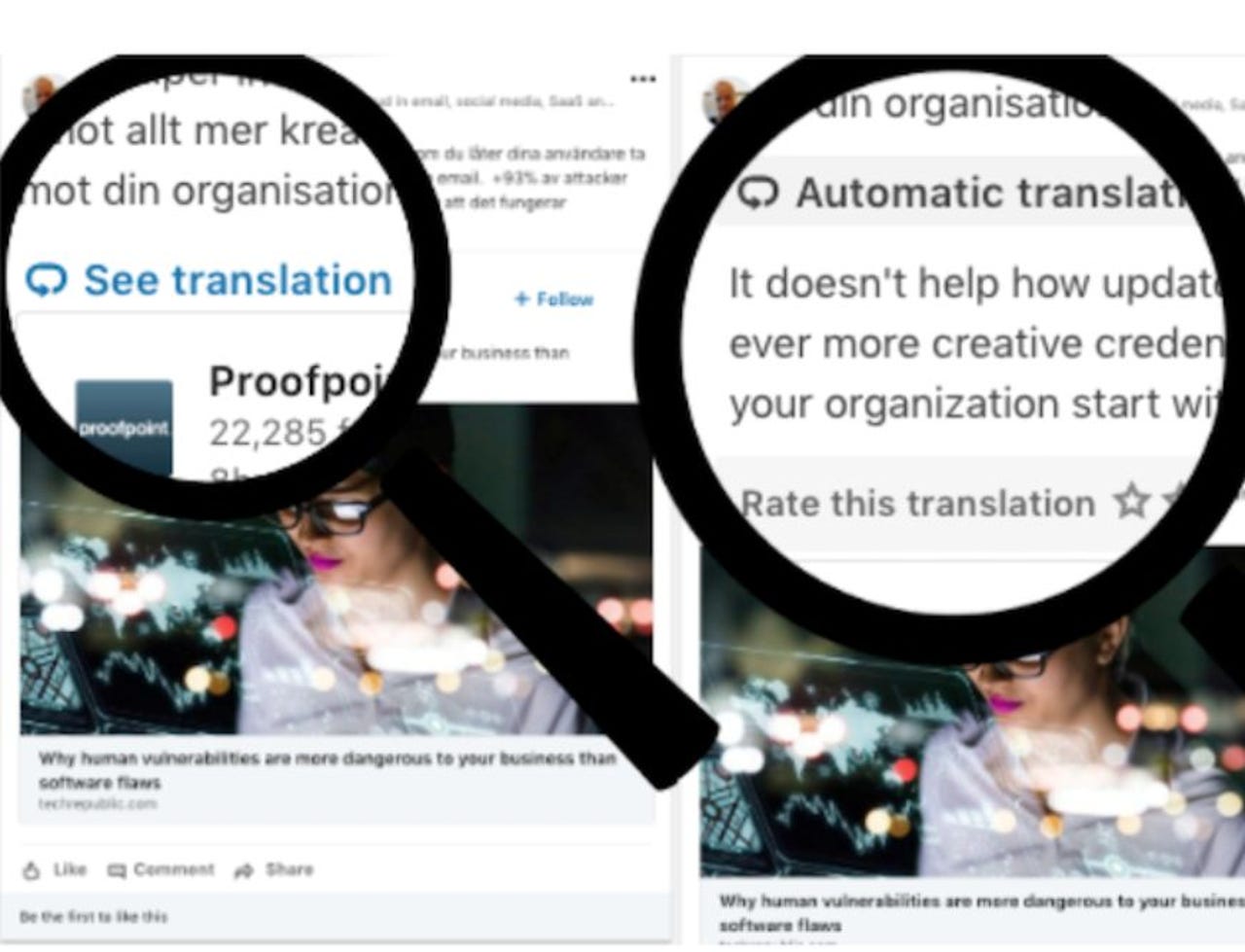LinkedIn launches translation feature that builds on Microsoft AI technologies

Microsoft's LinkedIn unit is rolling out a new translation feature for LinkedIn news posts that relies on some of Microsoft's core AI technologies.

Given that more than half of LinkedIn users are outside the U.S., LinkedIn officials saw a need to simplify cross-language communications in the news feed. Officials said translation of member posts has been one of the most-requested LinkedIn features.
Although LinkedIn largely used its own technologies and resources in developing the new dynamic translation feature, which is called "See Translation," LinkedIn officials noted that they did work with other Microsoft teams and use some of their technologies, too.
See Translation makes use of the Microsoft Azure Text Analytics programming interface which can detect up to 120 languages, as well as the Microsoft Translator Text programming interface, which is another one of Microsoft's Cognitive Services. The Translator Text API provides the ability to customize translation models for a specific domain, such as a news feed, according to LinkedIn's June 28 announcement.
The See Translation feature also builds on various open-source frameworks originally developed by LinkedIn, including Kafka, Samza and Rest.li for content language detection and tagging, LinkedIn officials said.
The LinkedIn engineering team has a post outlining how See Translation was developed.
LinkedIn officials also announced today, June 28, global availability of a new LinkedIn QR code feature, which allows users to quickly look up someone they've just met in lieu of exchanging business cards or phone numbers. LinkedIn QR code is available in the LinkedIn iOS and Android apps globally.
Microsoft bought LinkedIn in 2016 and has allowed that business to continue to run independently in many ways. Microsoft and LinkedIn have delivered some integrations between their various products and services, but LinkedIn is using its own datacenters and home-grown tools to build out its products and services.